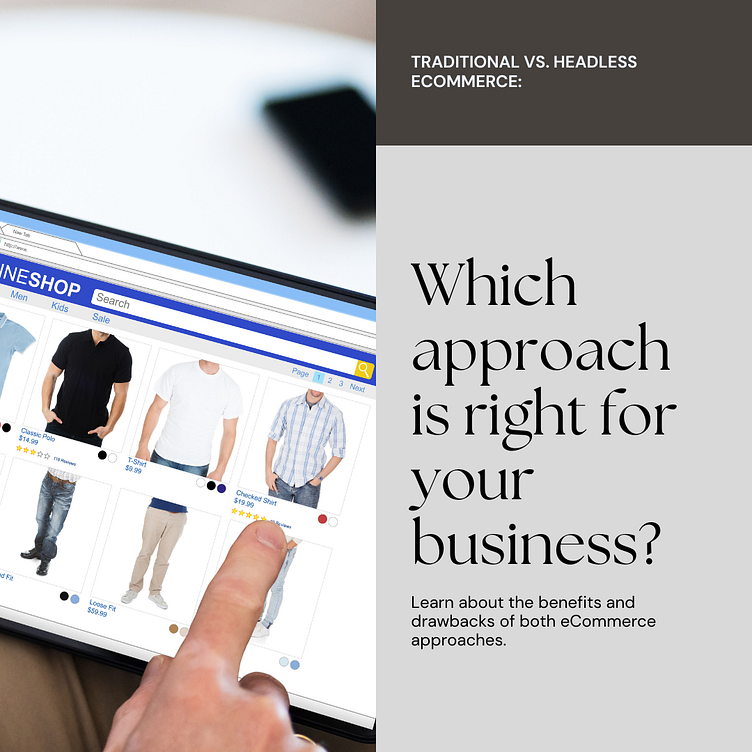Traditional Ecommerce vs. Headless Ecommerce
In the ever-evolving landscape of online commerce, businesses often face the decision of whether to opt for a traditional ecommerce approach or embrace the more modern concept of headless ecommerce. Each approach comes with its own set of advantages and challenges, and the choice largely depends on the specific needs and goals of your business.
Traditional Ecommerce:
1. Integrated Solution:
Pros: Traditional ecommerce platforms typically offer all-in-one solutions with integrated features, making it easier for businesses to manage their online stores without the need for extensive technical expertise.
Cons: Customization options may be limited, and updates to one aspect of the platform might affect others.
2. User-Friendly:
Pros: Traditional platforms are often user-friendly, making it easier for non-technical users to set up and manage their online stores.
Cons: Limited flexibility in terms of design and functionality.
3. Faster Implementation:
Pros: Traditional ecommerce solutions are generally quicker to set up, making them suitable for businesses looking to launch their online presence rapidly.
Cons: Less flexibility in terms of customization and adapting to specific business requirements.
4. Unified Content Management:
Pros: Content management is typically unified with the ecommerce platform, simplifying the process of updating product information and other content.
Cons: Limited flexibility for creating unique content experiences.
Headless Ecommerce:
1. Decoupled Architecture:
Pros: Headless ecommerce separates the frontend and backend, allowing for greater flexibility in design and user experience.
Cons: Requires more technical expertise and development resources.
2. Enhanced Flexibility:
Pros: With a headless approach, businesses have the freedom to choose and integrate best-of-breed solutions for different components of their ecommerce ecosystem.
Cons: Increased complexity in managing and maintaining different components.
3. Omnichannel Capability:
Pros: Headless architecture facilitates omnichannel strategies by enabling seamless integration with various channels and touchpoints.
Cons: Implementation can be more time-consuming and costly.
4. Personalization and Scalability:
Pros: Headless ecommerce allows for more personalized and scalable solutions, adapting easily to changing business needs.
Cons: Requires a skilled development team to maximize its potential.
Choosing the Right Approach:
1. Consider Your Business Goals:
If your priority is a quick and easy setup with minimal customization needs, a traditional approach may be suitable.
If scalability, flexibility, and a personalized user experience are crucial for your business, a headless approach might be more appropriate.
2. Assess Technical Resources:
Evaluate the technical expertise within your team or the availability of development resources. A headless approach requires a more skilled team to handle the increased complexity.
3. Future-Proofing:
Consider your long-term business goals and whether your chosen ecommerce approach can adapt to future changes in technology and consumer behavior.
4. Budget Constraints:
Assess your budget for ecommerce implementation and ongoing maintenance. A traditional approach might be more cost-effective initially, while a headless approach may offer a higher return on investment in the long run.
In conclusion, the choice between traditional and headless ecommerce depends on a careful evaluation of your business requirements, technical capabilities, and long-term goals. Both approaches have their merits, and the decision should align with your unique business needs.
